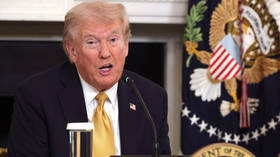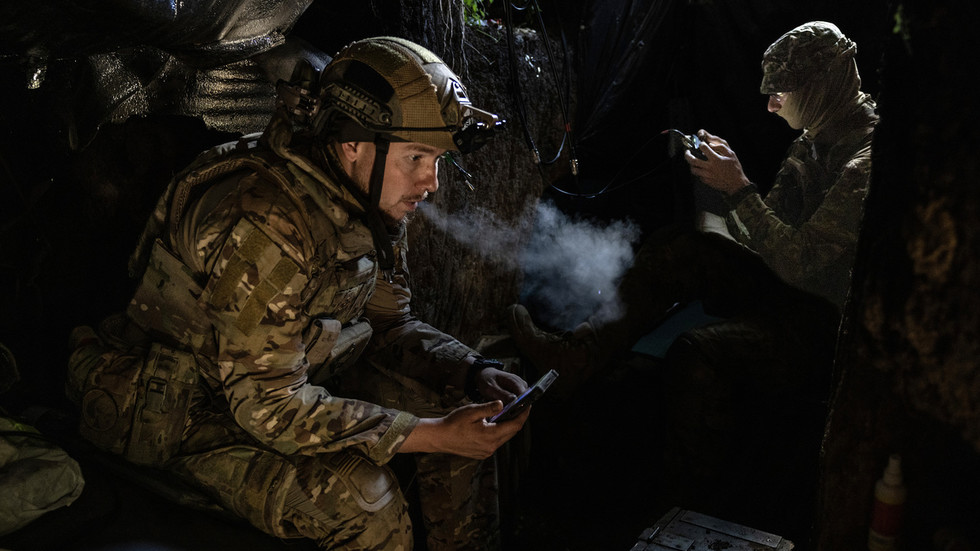There was – or seemed to be – hope for peace for a brief moment. And how deceptive it turned out to be. I was among those cautiously optimistic when we were told just over a week ago that the presidents of Russia and the US, Vladimir Putin and Donald Trump, had a long and useful phone conversation and were planning to meet in person again.
The ‘Alaska 2.0 summit’, to take place in the Hungarian capital, Budapest, has been called off before it was even properly scheduled, and Russia-US relations have taken further severe hits. Washington has initiated unprecedented sanctions on Russia’s two largest oil companies, which had not been sanctioned before, and dozens of their subsidiaries. All of this accompanied by what seems to be deliberately condescending and offensive rhetoric blaming Russia and its president – and them alone – for the persistent impasse in finding a negotiated solution to the Ukraine conflict – that is, the Western proxy war against Russia.
In reality, of course, it is Washington that can’t stop making U-turns that mess up what could have been a rational if difficult process of making peace. Witness the rather silly way in which Trump and his team have just oscillated between demanding that Ukraine surrender territory not yet taken by Russia and reverting to the pre-Alaska-summit dead-end position that a ceasefire must precede a full peace.
In addition, the Trump administration has been ambiguous at best about another escalation: Trump has denied it rather implausibly, but in reality, Washington seems to have permitted Kiev to carry out long-range strikes with European missiles – in particular, the British Storm Shadow – which include US parts and involve American targeting data: Another serious and provocative escalation.

The one piece of reasonable restraint still in place in Washington at this point is the refusal to transfer Tomahawk cruise missiles to Ukraine (via an eagerly paying NATO-EU Europe, of course). Again, given the second Trump administration’s short but disappointing history, there is no reason to consider this refusal dependable and permanent. Ukraine’s dated leader, Vladimir Zelensky, has already boasted that he has “not yet” got his hands on the Tomahawks. It’s as if Trump enjoys being paraded as fickle and playable by the same man he regularly humiliates in public. What an odd relationship.
The NATO-EU Europeans, meanwhile, have stalled on their much-vaunted plan for an interest-free ‘loan’ – not really the right term for money that will never be paid back – of yet another €140 billion, using frozen Russian assets as pseudo-collateral.
‘Pseudo’, because the dirty little not-quite-secret of the scheme is that in the end, it will be EU taxpayers once again who will really foot the bill. Indeed, for those with eyes to see, German Chancellor Friedrich Merz has long admitted as much, if in a venue most of his voters do not read and in terms clearly chosen to obfuscate: “budgetary guarantees from member states… [to] be replaced by collateralization under the EU’s long-term budget.” Translation: You, EU citizens, will pay, but in a way we make obscure enough for you to miss.
For now, the fortuitous inability of the EU to agree on how to spread the rather insane financial and political risks of this double-steal move – from Russia and from EU taxpayers – and ultra-corrupt Ukraine’s brazen demand to get this money in no-questions-asked-just-trust-us mode have delayed the realization of the scheme. That, too, like the US refusal to deliver Tomahawks to Kiev, is a tiny remnant of reason that may not last long. The new deadline set for a decision is December. If Eastern European hardliners and Russophobes, such as Poland’s Donald ‘I love terrorist attacks on vital infrastructure as long as they hit Germany’ Tusk, keep setting the tone, the loan operation to bury the euro’s credibility is likely to go ahead soon.
The EU has certainly not lost its appetite for measures that prolong a meat-grinder war for Ukrainians and damage the economy and general well-being of the inhabitants of NATO-EU-land. The 19th sanctions packet has been launched and hardball methods have been used to cajole resisters inside the EU – Hungary and Slovakia – to submit to a total cut-off of Russian gas and oil. These methods may very well already include more Nord Stream-style terrorist attacks, with refineries processing Russian oil blowing up at an astonishing pace now.
In sum, while official Kiev may celebrate, the news for ordinary Ukrainians is horrible: With the US fully reverting to a proxy-war course and the EU never even thinking about abandoning it, the war is now set to continue into next year. Unless there are further major reversals, Ukraine faces a terrible winter, and after that, a spring that will see renewed Russian ground offensives (at the latest).
Meanwhile, NATO figurehead and professional Trump sycophant Mark Rutte, comfortably seated next to his US boss, has said, in essence, that he does not give a damn about the fact that less than a quarter of Ukrainians want this war to continue. Former Polish Prime Minister Leszek Miller recommends shipping young male Ukrainians who have fled to Poland off to the front. In short, the cannon fodder must flow.
The West started its systematic and reckless policy of exposing Ukraine at the Bucharest summit in 2008, almost 20 years ago. What we see now is that it will not change course even in the face of the horrendous fiasco that policy has already predictably incurred. The mad and vicious strategy of sacrificing Ukraine to damage Russia continues. Worse, the more it fails, the more it is being escalated, in the manner of compulsive gamblers who cannot stop until they have lost absolutely everything. Ukraine’s tragedy is that it is its land and its people they are betting.
The statements, views and opinions expressed in this column are solely those of the author and do not necessarily represent those of RT.
Read the full article here


